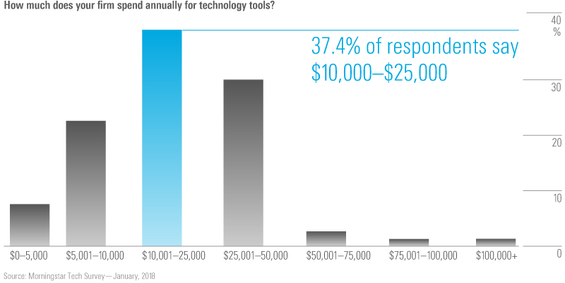
Once you have a good idea of your financial situation you can begin to make a financial planning. This will help you determine your monthly expenses, identify savings goals and cut costs. These tips will help get you started with your plan. You should keep track of all transactions that occur in your checking accounts. This will give you a historical look at your spending habits. Once you have this information, you can start determining where to make adjustments to your budget.
There are many resources available to help you develop a financial plan
Many things are included in your financial plan. Your retirement strategy, risk management plan and long-term investments plan should all be included. It should account for your current income as well as expenses. It is possible to create a plan for your financial future that addresses your immediate, medium-term, as well as long-term goals by identifying which debts must be paid off first. Here are some resources that can help you make a financial strategy that will meet your current needs.
A profit and loss statement should be included in a business's financial plan. Also known as a Profit and Loss Statement, the P&L is an accounting statement that shows how profitable a business is, how much it makes, and how little it loses. You can use this information to make strategic decisions for your business. These guidelines will guide you in your quest to get started.

In a financial plan, assets and liabilities are listed
What is the distinction between assets and liabilities when creating a financial plan for your business? Liabilities are money you owe other people or businesses. They can include deferred tax, loans, and bills. They can be divided into two types: current or long-term. Current liabilities include payments that are due right now such as short-term loan payments, and long-term obligations are those that will be due in the future.
What is the difference between non-current and current assets? In a financial plan, you'll categorize assets and liabilities according to their current value. Your current assets can include cash, stocks or investments. Non-current assets include equipment and vehicles, buildings and goodwill. Your liabilities include any loans that you will have to repay in the future, whether you are borrowing money for business or credit card debt.
Goals for a financial plan
When creating a financial plan, setting goals should be your first step. Each goal should have a defined time frame. You should, for instance, write down how much money you plan to invest in retirement if you are planning to retire at the age of 65. This will help you structure your retirement plan. Setting goals helps you stay motivated. A good financial plan has many goals. Retirement is one of them. Here are some common goals.
Saving money is the best long-term goal. This means putting aside 10% to 15% from your monthly paycheck for tax-advantaged retirement account. Two types of tax-advantaged retirement accounts are the Roth IRAs and Traditional IRAs. To ensure that you retire in a few decades, it is important to have money in these accounts. You should save more than you spend. Set realistic goals for both the short-term as well as long-term.

Costs associated with creating a financial planning plan
It is not easy to create a comprehensive financial plan. The amount of detail in your plan determines the cost. This fee ranged between $2,250 for comprehensive plans and $850 for modular ones. The longer the advisor worked on your plan, the higher the fee. One client's plan took advisors on average 11.9 hours to create. But this fee is reflected in the finished plan.
The typical hourly fee for an advisor that does not offer insurance products and services is $220. Advisors who offer investment services or insurance will typically charge more than those who plan. However, this higher fee does not reflect the advisor's credentials, but rather their perceived value. A financial planner who is paid an hourly fee charges between 1% - 2% of their clients assets. It isn't significant that there is a difference between an hourly and project-based fees.
FAQ
What are my options for retirement planning?
No. No. We offer free consultations so we can show your what's possible. Then you can decide if our services are for you.
Is it worth using a wealth manager?
A wealth management service should help you make better decisions on how to invest your money. It should also advise what types of investments are best for you. This will give you all the information that you need to make an educated decision.
There are many things to take into consideration before you hire a wealth manager. Consider whether you can trust the person or company that is offering this service. Can they react quickly if things go wrong? Can they explain what they're doing in plain English?
Where To Start Your Search For A Wealth Management Service
The following criteria should be considered when looking for a wealth manager service.
-
Proven track record
-
Is the company based locally
-
Offers free initial consultations
-
Continued support
-
There is a clear pricing structure
-
Has a good reputation
-
It is easy to contact
-
We offer 24/7 customer service
-
Offers a variety products
-
Low charges
-
Does not charge hidden fees
-
Doesn't require large upfront deposits
-
A clear plan for your finances
-
Is transparent in how you manage your money
-
This makes it easy to ask questions
-
Have a good understanding of your current situation
-
Understanding your goals and objectives
-
Would you be open to working with me regularly?
-
Works within your financial budget
-
Have a solid understanding of the local marketplace
-
Is willing to provide advice on how to make changes to your portfolio
-
Are you willing to set realistic expectations?
Who can help with my retirement planning
Retirement planning can prove to be an overwhelming financial challenge for many. It's more than just saving for yourself. You also have to make sure that you have enough money in your retirement fund to support your family.
Remember that there are several ways to calculate the amount you should save depending on where you are at in life.
If you are married, you will need to account for any joint savings and also provide for your personal spending needs. Singles may find it helpful to consider how much money you would like to spend each month on yourself and then use that figure to determine how much to save.
You can save money if you are currently employed and set up a monthly contribution to a pension plan. You might also consider investing in shares or other investments which will provide long-term growth.
Get more information by contacting a wealth management professional or financial advisor.
Statistics
- A recent survey of financial advisors finds the median advisory fee (up to $1 million AUM) is just around 1%.1 (investopedia.com)
- As previously mentioned, according to a 2017 study, stocks were found to be a highly successful investment, with the rate of return averaging around seven percent. (fortunebuilders.com)
- According to a 2017 study, the average rate of return for real estate over a roughly 150-year period was around eight percent. (fortunebuilders.com)
- US resident who opens a new IBKR Pro individual or joint account receives a 0.25% rate reduction on margin loans. (nerdwallet.com)
External Links
How To
How to invest your savings to make money
You can get returns on your capital by investing in stock markets, mutual funds, bonds or real estate. This is what we call investing. It is important to understand that investing does not guarantee a profit but rather increases the chances of earning profits. There are various ways to invest your savings. These include stocks, mutual fund, gold, commodities, realestate, bonds, stocks, and ETFs (Exchange Traded Funds). These are the methods we will be discussing below.
Stock Market
Stock market investing is one of the most popular options for saving money. It allows you to purchase shares in companies that sell products and services similar to those you might otherwise buy. You can also diversify your portfolio and protect yourself against financial loss by buying stocks. You can, for instance, sell shares in an oil company to buy shares in one that makes other products.
Mutual Fund
A mutual fund refers to a group of individuals or institutions that invest in securities. They are professionally managed pools of equity, debt, or hybrid securities. A mutual fund's investment objectives are often determined by the board of directors.
Gold
Gold has been known to preserve value over long periods and is considered a safe haven during economic uncertainty. It is also used in certain countries to make currency. The increased demand for gold from investors who want to protect themselves from inflation has caused the prices of gold to rise significantly over recent years. The supply and demand fundamentals determine the price of gold.
Real Estate
The land and buildings that make up real estate are called "real estate". You own all rights and property when you purchase real estate. Rent out a portion your house to make additional income. You may use the home as collateral for loans. The home may also be used to obtain tax benefits. Before buying any type property, it is important to consider the following things: location, condition and age.
Commodity
Commodities refer to raw materials like metals and grains as well as agricultural products. These items are more valuable than ever so commodity-related investments are a good idea. Investors looking to capitalize on this trend need the ability to analyze charts and graphs to identify trends and determine which entry point is best for their portfolios.
Bonds
BONDS can be used to make loans to corporations or governments. A bond can be described as a loan where one or both of the parties agrees to repay the principal at a particular date in return for interest payments. As interest rates fall, bond prices increase and vice versa. Investors buy bonds to earn interest and then wait for the borrower repay the principal.
Stocks
STOCKS INVOLVE SHARES OF OWNERSHIP IN A CORPORATION. A share represents a fractional ownership of a business. You are a shareholder if you own 100 shares in XYZ Corp. and have the right to vote on any matters affecting the company. Dividends are also paid out to shareholders when the company makes profits. Dividends, which are cash distributions to shareholders, are cash dividends.
ETFs
An Exchange Traded Fund (ETF), is a security which tracks an index of stocks or bonds, currencies, commodities or other asset classes. ETFs are traded on public exchanges like traditional mutual funds. For example, the iShares Core S&P 500 ETF (NYSEARCA: SPY) is designed to track the performance of the Standard & Poor's 500 Index. Your portfolio will automatically reflect the performance S&P 500 if SPY shares are purchased.
Venture Capital
Venture capital is private financing venture capitalists provide entrepreneurs to help them start new businesses. Venture capitalists offer financing for startups that have low or no revenues and are at high risk of failing. Usually, they invest in early-stage companies, such as those just starting out.